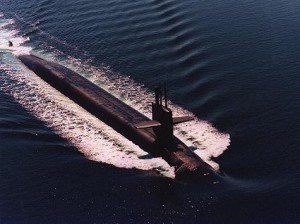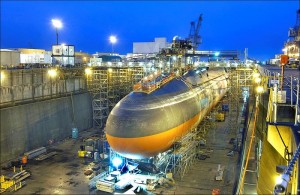Recently, several observers have noted that the Navy’s Annual Long-Range Plan for Construction of Naval Vessels raises the prospect that the Navy will be unable to afford the 12 ballistic missile submarines (SSBN) that it intends to build to replace the Ohio class. On June 12 at the Peter Huessy Congressional Breakfast Series, General Kehler, commander of U.S. Strategic Command (USSTRATCOM), made clear that this would not be the case.
 General Kehler stated that the Ohio class must be replaced due to what he said that the Navy describes as “metallurgy” issues wearing out the hulls of the submarines, making the likelihood of a life time extension project minimal. The Ohio class was built from the 1970s to 1990s and will begin being phased out in 2027 when the first of the class is slated to retire; it has already had its planned service life of 30 years extended to 42 years.
General Kehler stated that the Ohio class must be replaced due to what he said that the Navy describes as “metallurgy” issues wearing out the hulls of the submarines, making the likelihood of a life time extension project minimal. The Ohio class was built from the 1970s to 1990s and will begin being phased out in 2027 when the first of the class is slated to retire; it has already had its planned service life of 30 years extended to 42 years.
Stating that he was a firm believer in the nuclear triad approach to deterrence, General Kehler said that the U.S. must keep a “modern and capable portion of the deterrent (force) at sea.” Following this he made it clear that the Navy would have its 12 replacement SSBNs for the Ohio class.
He went on to say that hopefully more than 12 of the new class would be purchased, but that purchasing decisions will ultimately be made years from now. This statement makes sense in the context that with only 16 planned launch tubes per SSBN the class that replaces the Ohio, with only 12 submarines, will only field 80% of the missiles that the current force of Ohios field despite USSTRATCOM’s recommendation for the new class to have 20 launch tubes.
Still, General Kehler’s statements are somewhat surprising given the combination of the current budget environment and the Navy’s own statements in its Long-Range Plan. Administration budget requests released in February covering the U.S.’s strategic nuclear weapons programs from FY 13 to FY 17 appear not to include funds for R&D programs on new nuclear platform programs including the expected $5.5 billion for the Navy’s replacement submarine for the Ohio. The Plan makes clear that the run up time in terms of design and construction remove a great degree of flexibility from the procurement process.
 In response to the current budget environment the Navy has already pushed the procurement of its first replacement submarine back by 2 years to sometime in 2021-2022. Statements by Ashton Carter, then Under Secretary of Defense for Acquisition, Technology, and Logistics in 2012 make it clear though, that in addition to budget concerns, that it might simply not have been possible to begin procurement as planned in 2019 due to the overly ambitious speed of the program. This will have the effect of the U.S. only being able to put 10 to 11 SSBNs to sea for deterrence duty from 2029 to 2041, the bear minimum that the Navy considers necessary.
In response to the current budget environment the Navy has already pushed the procurement of its first replacement submarine back by 2 years to sometime in 2021-2022. Statements by Ashton Carter, then Under Secretary of Defense for Acquisition, Technology, and Logistics in 2012 make it clear though, that in addition to budget concerns, that it might simply not have been possible to begin procurement as planned in 2019 due to the overly ambitious speed of the program. This will have the effect of the U.S. only being able to put 10 to 11 SSBNs to sea for deterrence duty from 2029 to 2041, the bear minimum that the Navy considers necessary.
With the Navy’s FY 13 budget only requesting $564.9 million for continued research and
development on a replacement for the Ohio class it will be interesting to see if General Kehler and his successors at USSTRATCOM get their 12 new SSBNs or possibly more as he stated. It will be worthwhile to watch the upcoming national security budget and any comments from Admiral Terry Benedict, Director of Strategic Systems Programs, especially as he is scheduled to speak on the topic at the June 26 Peter Huessy Congressional Breakfast.
As changes are made to the U.S.’s nuclear forces, especially with President Obama’s announcement today in Berlin to seek cuts to currently deployed nuclear weapons by a third, putting them below Cold War levels, it will be important to observe what the U.S.’s overall nuclear posture will be moving forwards. As the Administration seeks a more streamlined nuclear force in a negotiated agreement with Russia, USSTRATCOM may find itself having to consider which nuclear platforms it really wishes to continue to support and deploy.
Christopher Smith is a PhD student at the University of Arizona’s Department of Chemistry and Biochemistry with a focus on Analytical Chemistry.


